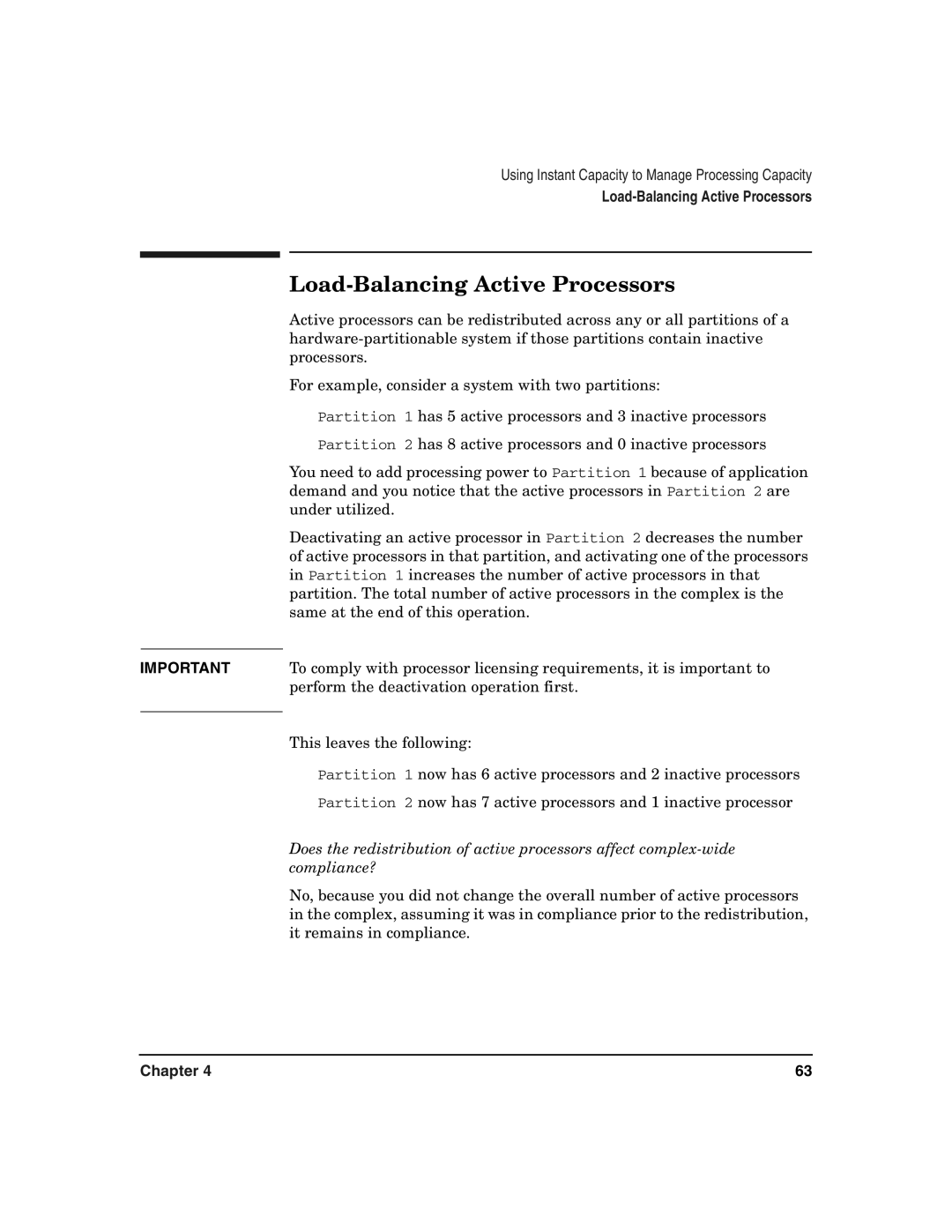
IMPORTANT
Using Instant Capacity to Manage Processing Capacity
Load-Balancing Active Processors
Active processors can be redistributed across any or all partitions of a
For example, consider a system with two partitions:
Partition 1 has 5 active processors and 3 inactive processors
Partition 2 has 8 active processors and 0 inactive processors
You need to add processing power to Partition 1 because of application demand and you notice that the active processors in Partition 2 are under utilized.
Deactivating an active processor in Partition 2 decreases the number of active processors in that partition, and activating one of the processors in Partition 1 increases the number of active processors in that partition. The total number of active processors in the complex is the same at the end of this operation.
To comply with processor licensing requirements, it is important to perform the deactivation operation first.
This leaves the following:
Partition 1 now has 6 active processors and 2 inactive processors
Partition 2 now has 7 active processors and 1 inactive processor
Does the redistribution of active processors affect
No, because you did not change the overall number of active processors in the complex, assuming it was in compliance prior to the redistribution, it remains in compliance.
Chapter 4 | 63 |
